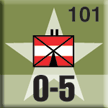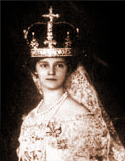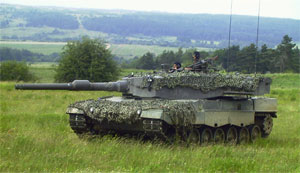A Bucket of Nothing:
The U.S. Army’s Austrian Battalion
By Mike Bennighof, Ph.D.
October 2012
In the summer of 1942, the U.S. Army embarked
on a political experiment, forming four “ethnic”
battalions of men of particular ancestry.
The most famous of these, the 100th Infantry
Battalion, was formed from men of Japanese
ancestry (collectively called “Nisei”
no matter how many generations their family
had been on American soil) removed from the
Hawaiian National Guard and fought with incredible
valor in France and Italy in 1944 and 1945.
The 99th
Infantry Battalion, formed from Norwegian
expatriates and Americans of Norwegian ancestry,
had a checkered path but fought well when
committed to battle. The 122nd Infantry Battalion,
made up of Greeks and Greek-Americans, never
saw action as a line unit but instead became
a source for Greek-speaking commando teams
to be inserted into enemy-occupied Greece.
Its men also compiled an enviable war record,
though officially as part of the OSS rather
than the Army.
And then there was the Austrian battalion.

The 101st Infantry Battalion (Separate) came
into existence thanks to political maneuvering
by the exiled Empress Zita, wife of the last
Emperor of Austria-Hungary. Hearing of the
other “ethnic” units, she pressured
the State Department to create an Austrian
one as well. The U.S. Army did not want to
form the unit at all, and the Army bureaucracy
did its best to hide the battalion’s
very existence. The first recruits came to
Camp Atterbury, Indiana, officially on “detached
duty.” They trained separately from
the other units on the base, lived in separate
barracks, and ate in a separate mess hall.

Austria’s last Empress,
foe of the Nazis.
While the Empress was no doubt a vain and
bitter woman, she and the legitimist movement
can’t be faulted for their staunch opposition
to Nazi rule in Austria. She hated Hitler
and the Nazis, and sought to fight the Nazis
by any means necessary. Thanks in large part
to Zita, in July 1942, President Franklin
D. Roosevelt officially declared restoration
of an independent Austria to be an American
war aim. Though many charged her with working
toward a Habsburg restoration, she was always
consistent in demanding that the Austrian
people should choose their government.
Zita’s son Otto, heir to the throne,
sought to establish an Austrian army-in-exile.
A similar attempt launched in France in 1939
had failed. With the support of Gen. Wladimir
Sikorski of the Polish Exile movement, Zita
and Otto finally secured American agreement.

Otto von Habsburg.
European unionist; Nazi enemy.
Not a bad historian, either.
Whether Zita saw the unit as the spearhead
of her triumphant return to Vienna is doubtful.
While she would not allow Otto to risk himself
in combat, the empress did send her three
other sons to the unit as ordinary soldiers.
Charles, Rudolf and Felix von Habsburg all
reported to Camp Atterbury.
The three quickly became highly unpopular
in the unit, insisting that the other soldiers
refer to them as “Archduke” and
stenciling the title on their footlockers.
Decades later, urban legend at the University
of Vienna had it their granddaughters insisted
that professors and students alike address
them as “Archduchess” and that
they refused to stand in lines with mere mortals.
I never saw this myself, but then, they never
deigned to speak to me.

Modern Austrian firepower.
A Leopard 2 of the present Bundesheer.
The Austrian battalion became noted for
its poor morale, poor discipline and poor
training standards. While the Greek and Norwegian
units had been recruited from volunteers,
very few Austrians volunteered for the 101st.
Therefore, the Army transferred men who had
listed “Austria” as their nation
of birth — whether they were actually
Austrian or not.
Many of these recruits turned out to be Poles,
Croats, Hungarians or one of the myriad other
nationalities of the old Austro-Hungarian
Empire. Few of them had much enthusiasm for
a project some saw as restoring the Habsburgs
to their throne; many of them had parents
who’d come to the United States precisely
to escape imperial rule. Lt. Col. Vincent
J. Conrad, the battalion commander, had been
handed a political/ethnic powder keg.
The Army finally admitted the battalion’s
existence in the late spring of 1943, placing
newspaper stories about the unit and allowing
staged photos of Austrians in American uniform
to be published. But the battalion had outlived
its usefulness. Soon afterwards, its personnel
were transferred to other units — not
in groups, but in ones and twos, so that any
trace of the bizarre battalion would be erased.
In December 1943, the 101st Infantry Battalion
(Separate) was formally removed from the Army’s
lists. An Austrian battalion would attend
the country’s liberation in May 1945,
but it was one organized under French auspices.
The counter we’ve shown for the 101st
is suitable for America
Triumphant or Alsace
1945. We didn’t include a free
download for it or rules for its use; it’s
pretty much useless.
|
